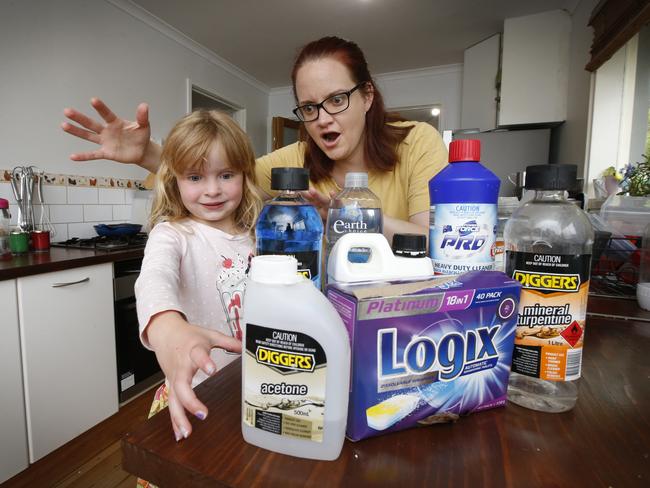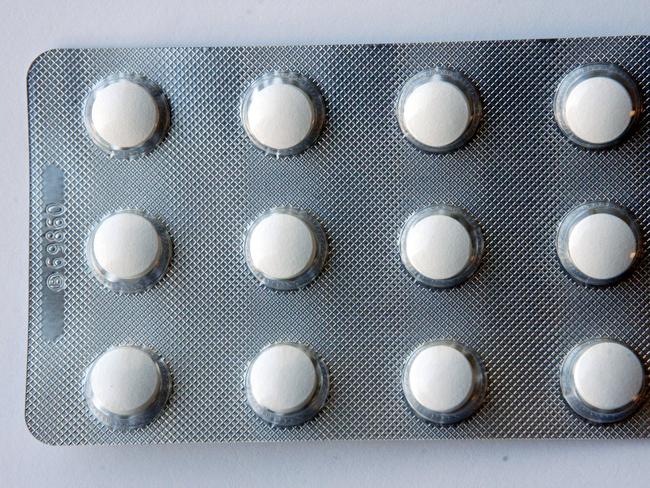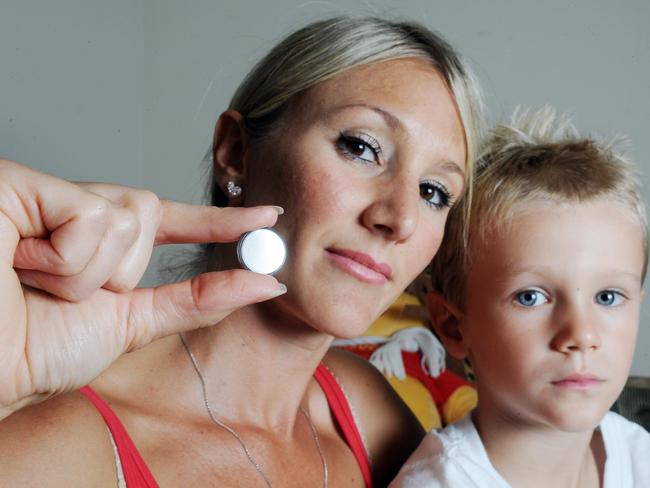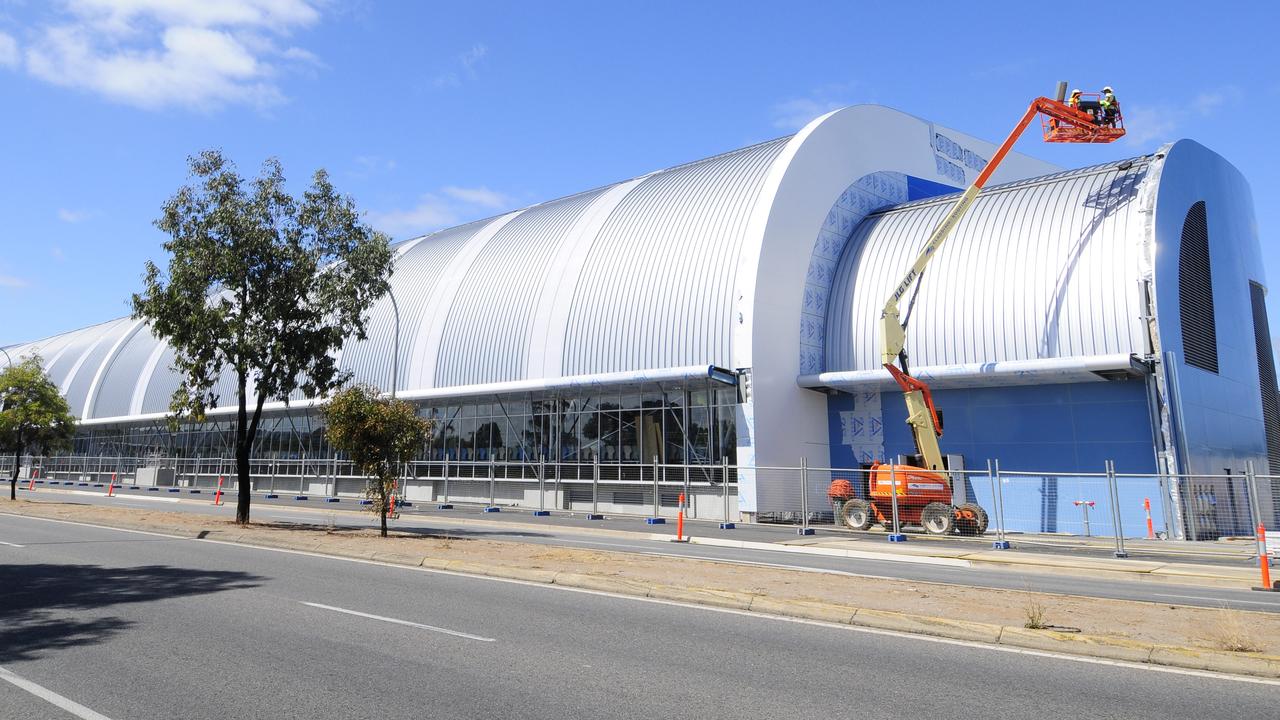Household items poisoning South Australian kids
Parents in South Australia are being warned common household products pose a serious poisoning threat these summer holidays. Here are the top dangers at home.

SA News
Don't miss out on the headlines from SA News. Followed categories will be added to My News.
South Australian parents are being warned common household products pose a serious poisoning threat these summer holidays.
New data shows paracetamol, ibuprofen and alcohol were among the top 10 substances involved in actual or suspected poison exposures recorded across the December 1 to January 31 period over the past three years.
The figures were collated by the NSW Poisons Information Centre data, which looks after some calls from South Australians seeking poison’s advice.
Other calls are handled by the Western Australia Poisons Information Centre.
More than 99 cases involving headache-busting paracetamol were recorded among South Australian residents in the period, followed by 43 cases of ibuprofen poisoning.
Alcohol was third on the national list of poisonings — 32 cases came from South Australia.
A further 18 locals called for advice over antipsychotic drug quetiapine, and 24 sought advice for pyrethrins or pyrethroids — a compound commonly found in fly sprays.
Relaxant diazepam, more commonly known as Valium, was the sixth most common substance Australians sought advice on and accounted for 24 cases in South Australia.
The list was rounded out with bleach (18 cases in South Australia), household cleaners (18), paracetamol drugs with codeine (20), and cyaulume light sticks, more commonly known as glow sticks (1).
Senior poisons specialist at the Centre, Genevieve Adamo, said over the summer period — as Australians socialised more and had people over to their homes — was risky because due to it being “ubiquitous”.
“It can be very dangerous through accidental exposures if kids get into it and have large quantities accidentally. And also through medication errors where people are taking it too frequently, or taking slightly more than they’re supposed to regularly over a period of time as well as people taking excessive amounts of self-harm,” Ms Adamo said.
Increased alcohol consumption over the break also presented dangers.

“Young people or children may be at parties where adults are consuming alcohol, and they may be inadvertently or accidentally exposed to it,” she said.
“Alcohol can cause toxicity in children and young people more frequently and have more serious effects.”
Ms Adamo said in the event of an actual or suspected poisoning, vomiting should not be induced.

If the eyes or skin are affected, she recommended flushing with water for 10 minutes while someone else called the poisons centre with details of the exposure.
Dr Osanda Wijeratne, deputy chief medical officer at Healthdirect Australia, said in order to lower the risk of poisoning at the home, products like cleaners and medications should be kept high up in cupboards, and fitted with a child-safety lock or clip.
Dr Wijerante said button batteries, which can cause-life threatening injuries and even death if swallowed, should be disposed of immediately when replaced, and when in use, secured to the greatest extent possible.
“Lots of household devices are powered by button batteries. It’s important to make sure that if you’re replacing them to make sure they’re not left lying around,” he said.
“When in use, make sure the battery compartment is shut … you can also use a strong bit of household tape to secure the compartment closed”.
He said adults sometimes found themselves in trouble after accidentally taking double doses, or mistaking another family member’s prescription medication as their own.
A way to avoid this if taking multiple medications was to ask a pharmacist to fill a Webster-pak, which sets out an individual’s weekly medication for them, he said.

Mother Emily Studd said her two young girls — Savannah, 12, and Sophia, five — have fortunately avoided accidents with household poisons because she took steps to ensure the common, yet dangerous products were out of their reach when they were younger.
“The cleaners are stored under the sink and the medicines are in a high cupboard in the bathroom and fridge,” Ms Studd said.
“My children are old enough to understand now, but we also don’t use many overly toxic chemicals or cleaners.
“Children can be incredibly quick and very clever at finding things they shouldn’t.”
For free poisons advice 24 hours a day, seven days a week, call the Poisons Information Centre on 13 11 26
TIPS TO PREVENT AND HANDLE POISONINGS
– Do not induce vomiting if a substance has been ingested.
– In the event of an exposure to the skin or eyes, flush with water for 10 minutes.
– Keep items like cleaners and medications up high in cupboards away from children.
– Do not decant cleaners into other bottles.
– Keep track of when you have taken your medications to avoid double dosing.
– Call the Poisons Information Centre for free advice, 24 hours a day, seven days a week on 13 11 26
Source: Genevieve Adamo, Senior Poisons Specialist, NSW Poisons Information Centre; Carol Wylie, Manager, QLD Poisons Information Centre; Associate Professor Shaun Greene, Medical Director, Victorian Poisons Information Centre
Originally published as Household items poisoning South Australian kids




